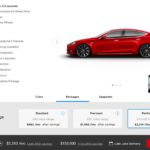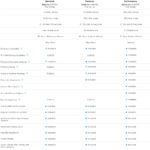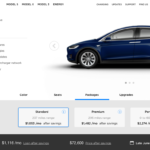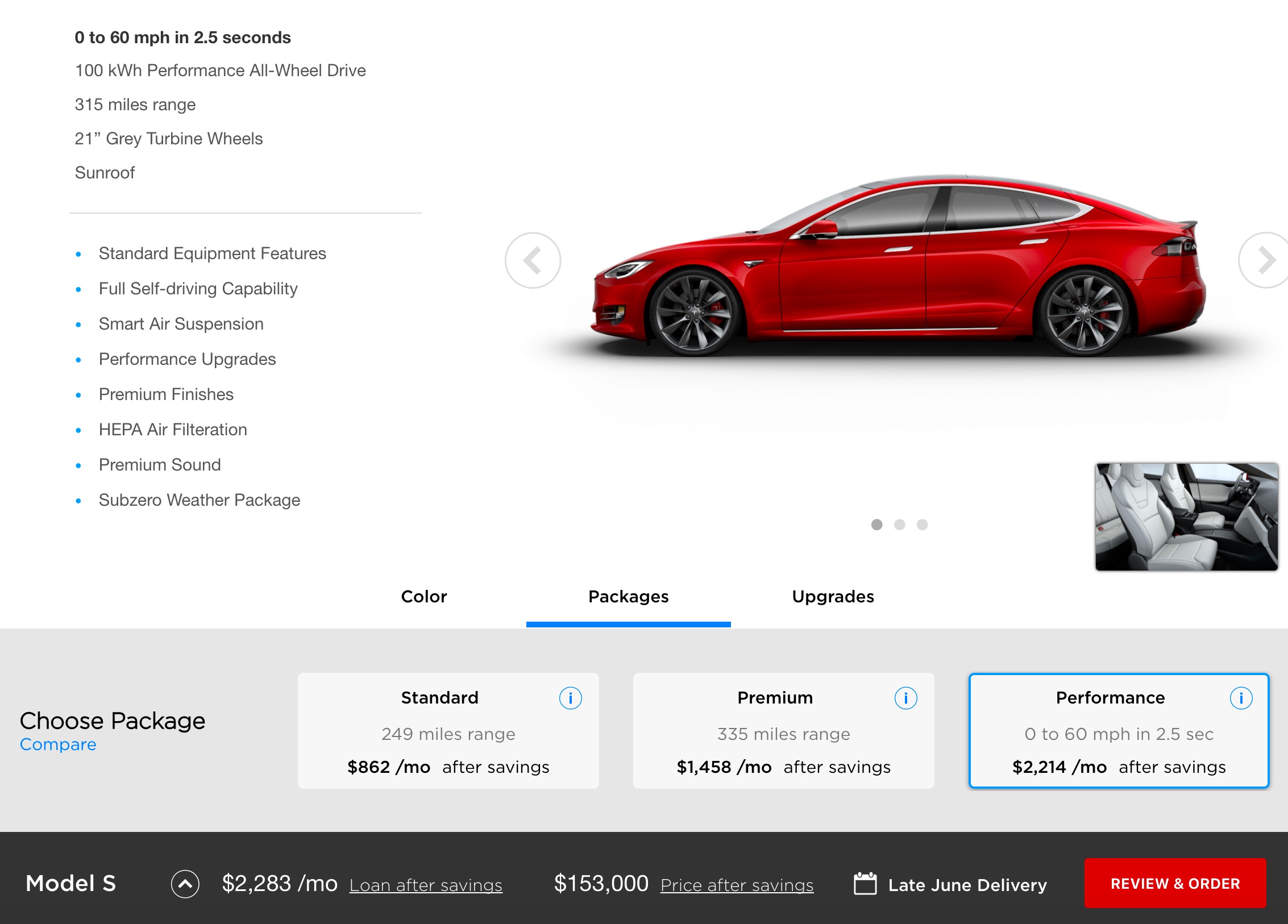
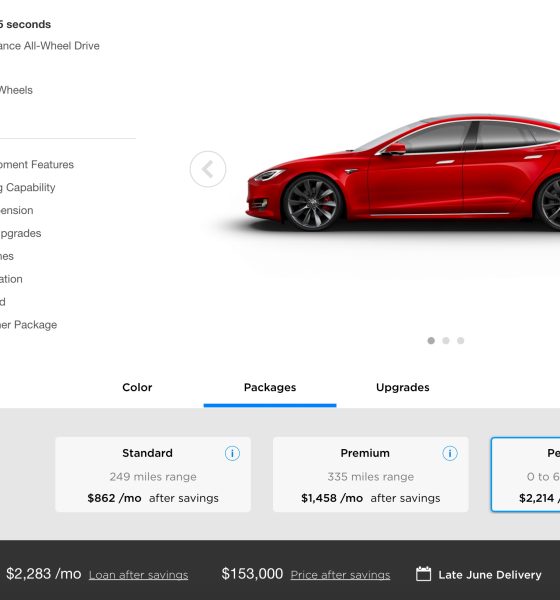
News
Tesla will bundle car buying into “packages”, 90 kWh battery discontinued June 8
Tesla will launch an updated version of the Model S and Model X Design Studio that “packages” vehicle configurations into three categories: standard, premium and performance. The update will come ahead of the company’s planned production of its $35k mass market Tesla Model 3, and is likely a precursor to what the Model 3 online configurator will eventually look like.
Also spotted in the newly designed online vehicle configurator is the removal of the 90 kWh battery pack option that’s currently planned for discontinuation on June 8, according to sources and also validated by our friends at Model 3 Owners Club. Model S and Model X buyers will choose from either a “standard” configuration with a 75 kWh battery pack that’s capable of 249 miles of range on the Model S and 237 miles on the Model X, or a “premium” configuration that utilizes Tesla’s long-range 100 kWh battery pack. Model S will be capable of 335 miles of range on the 100 kWh pack while Model X will have just shy of a 300-mile-range per single charge. Lastly, adrenaline junkies will be able to select the “performance” package that trades driving range for increased acceleration.
The Design Studio redesign comes shortly after Tesla published a chart comparing the Model S and Model 3 that seems to clearly push their “anti-sell Model 3” approach. The chart reveals Tesla’s drastically reduced number of configurations being made available for Model 3, at less than 100, and over 1,500 possible configurations for Model S.
Comparing Model S vs Model 3 https://t.co/JPM9VVGbhA
— Elon Musk (@elonmusk) May 26, 2017
Tesla’s newest Design Studio with “packages” aims to simplify the car buying experience, but more importantly is a move that allows its production line to operate more efficiently by reducing the number of unique car configurations that can be built. Producing cars with like-kind features allows the factory team to build at faster speeds, with less complexity and at a lower cost.
ALSO SEE: Which Tesla Model 3 customizations will be available to initial buyers?
Tesla invested heavily into designing the Model 3 for scale. The Silicon Valley electric car maker underwent a full redesign of the manufacturing equipment used on its vehicle production line. Tesla also purchased German automation company Grohmann Engineering to form Tesla Advanced Automation Germany which reveals that the company will go to extreme lengths to truly optimize its manufacturing process.
On the new online Design Center configurator, customers can click on the Compare button in the lower left corner to pull up the full list of detailed options in each of the three major packages.
Tesla has previously pushed to optimize its offerings with the constant refinement of battery pack sizes and discontinuation of unpopular options. Further updates to the battery packs, like upgrading the Model S and Model X battery to utilize the new high energy density 2170 lithium ion cell being used in Model 3, are expected in the near future as Tesla’s Gigafactory begins volume production of battery cells.
Buyers looking for more granularity in terms of options will still be to use the original configurator.

News
Tesla FSD fleet is nearing 7 billion total miles, including 2.5 billion city miles
As can be seen on Tesla’s official FSD webpage, vehicles equipped with the system have now navigated over 6.99 billion miles.

Tesla’s Full Self-Driving (Supervised) fleet is closing in on almost 7 billion total miles driven, as per data posted by the company on its official FSD webpage.
These figures hint at the massive scale of data fueling Tesla’s rapid FSD improvements, which have been quite notable as of late.
FSD mileage milestones
As can be seen on Tesla’s official FSD webpage, vehicles equipped with the system have now navigated over 6.99 billion miles. Tesla owner and avid FSD tester Whole Mars Catalog also shared a screenshot indicating that from the nearly 7 billion miles traveled by the FSD fleet, more than 2.5 billion miles were driven inside cities.
City miles are particularly valuable for complex urban scenarios like unprotected turns, pedestrian interactions, and traffic lights. This is also the difference-maker for FSD, as only complex solutions, such as Waymo’s self-driving taxis, operate similarly on inner-city streets. And even then, incidents such as the San Francisco blackouts have proven challenging for sensor-rich vehicles like Waymos.
Tesla’s data edge
Tesla has a number of advantages in the autonomous vehicle sector, one of which is the size of its fleet and the number of vehicles training FSD on real-world roads. Tesla’s nearly 7 billion FSD miles then allow the company to roll out updates that make its vehicles behave like they are being driven by experienced drivers, even if they are operating on their own.
So notable are Tesla’s improvements to FSD that NVIDIA Director of Robotics Jim Fan, after experiencing FSD v14, noted that the system is the first AI that passes what he described as a “Physical Turing Test.”
“Despite knowing exactly how robot learning works, I still find it magical watching the steering wheel turn by itself. First it feels surreal, next it becomes routine. Then, like the smartphone, taking it away actively hurts. This is how humanity gets rewired and glued to god-like technologies,” Fan wrote in a post on X.
News
Tesla starts showing how FSD will change lives in Europe
Local officials tested the system on narrow country roads and were impressed by FSD’s smooth, human-like driving, with some calling the service a game-changer for everyday life in areas that are far from urban centers.

Tesla has launched Europe’s first public shuttle service using Full Self-Driving (Supervised) in the rural Eifelkreis Bitburg-Prüm region of Germany, demonstrating how the technology can restore independence and mobility for people who struggle with limited transport options.
Local officials tested the system on narrow country roads and were impressed by FSD’s smooth, human-like driving, with some calling the service a game-changer for everyday life in areas that are far from urban centers.
Officials see real impact on rural residents
Arzfeld Mayor Johannes Kuhl and District Administrator Andreas Kruppert personally tested the Tesla shuttle service. This allowed them to see just how well FSD navigated winding lanes and rural roads confidently. Kruppert said, “Autonomous driving sounds like science fiction to many, but we simply see here that it works totally well in rural regions too.” Kuhl, for his part, also noted that FSD “feels like a very experienced driver.”
The pilot complements the area’s “Citizen Bus” program, which provides on-demand rides for elderly residents who can no longer drive themselves. Tesla Europe shared a video of a demonstration of the service, highlighting how FSD gives people their freedom back, even in places where public transport is not as prevalent.
What the Ministry for Economic Affairs and Transport says
Rhineland-Palatinate’s Minister Daniela Schmitt supported the project, praising the collaboration that made this “first of its kind in Europe” possible. As per the ministry, the rural rollout for the service shows FSD’s potential beyond major cities, and it delivers tangible benefits like grocery runs, doctor visits, and social connections for isolated residents.
“Reliable and flexible mobility is especially vital in rural areas. With the launch of a shuttle service using self-driving vehicles (FSD supervised) by Tesla in the Eifelkreis Bitburg-Prüm, an innovative pilot project is now getting underway that complements local community bus services. It is the first project of its kind in Europe.
“The result is a real gain for rural mobility: greater accessibility, more flexibility and tangible benefits for everyday life. A strong signal for innovation, cooperation and future-oriented mobility beyond urban centers,” the ministry wrote in a LinkedIn post.
News
Tesla China quietly posts Robotaxi-related job listing
Tesla China is currently seeking a Low Voltage Electrical Engineer to work on circuit board design for the company’s autonomous vehicles.

Tesla has posted a new job listing in Shanghai explicitly tied to its Robotaxi program, fueling speculation that the company is preparing to launch its dedicated autonomous ride-hailing service in China.
As noted in the listing, Tesla China is currently seeking a Low Voltage Electrical Engineer to work on circuit board design for the company’s autonomous vehicles.
Robotaxi-specific role
The listing, which was shared on social media platform X by industry watcher @tslaming, suggested that Tesla China is looking to fill the role urgently. The job listing itself specifically mentions that the person hired for the role will be working on the Low Voltage Hardware team, which would design the circuit boards that would serve as the nervous system of the Robotaxi.
Key tasks for the role, as indicated in the job listing, include collaboration with PCB layout, firmware, mechanical, program management, and validation teams, among other responsibilities. The role is based in Shanghai.
China Robotaxi launch
China represents a massive potential market for robotaxis, with its dense urban centers and supportive policies in select cities. Tesla has limited permission to roll out FSD in the country, though despite this, its vehicles have been hailed as among the best in the market when it comes to autonomous features. So far, at least, it appears that China supports Tesla’s FSD and Robotaxi rollout.
This was hinted at in November, when Tesla brought the Cybercab to the 8th China International Import Expo (CIIE) in Shanghai, marking the first time that the autonomous two-seater was brought to the Asia-Pacific region. The vehicle, despite not having a release date in China, received a significant amount of interest among the event’s attendees.
